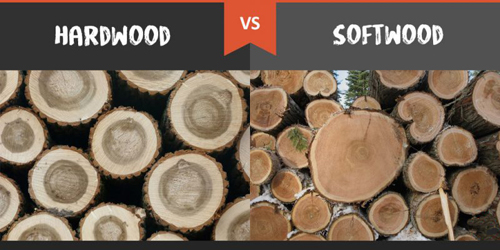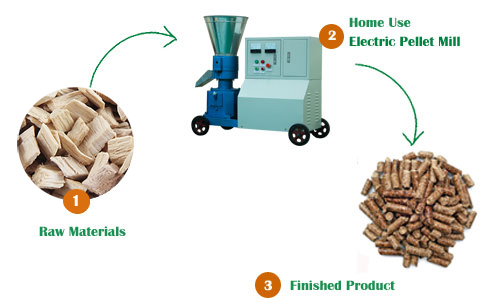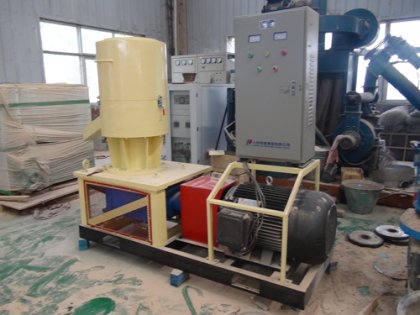What is the difference between softwood pellet and hardwood pellet?
Hardwood refers to hard, fine wood. Often used to make expensive wood furniture and other valuable wood products. Hardwoods are mostly taken from deciduous thin-leaved forests, including oak, mahogany, birch, red oak, hard maple, red alder, beech, and boxwood. Usually the price is higher, but the quality is better than soft wood, and its color and texture change more.
Softwood, which is a finger-leafed tree material, is a wood produced from the cypress plant tree, including pine, spruce, cedar, fir, larch, Douglas fir, hemlock, cypress, California rosewood, and yew. As the name suggests, because its texture is relatively soft with hardwood, it is also known as softwood.
 The traditional view is that hardwood is always a better choice for fireplace burning. However, when it comes to wood pellet furnaces, the traditional view is inaccurate. Hardwood logs are more effective than softwood logs because hardwoods are more dense than softwoods. However, in the production of wood pellets, the difference between hardwood and softwood shrinks a lot.
The traditional view is that hardwood is always a better choice for fireplace burning. However, when it comes to wood pellet furnaces, the traditional view is inaccurate. Hardwood logs are more effective than softwood logs because hardwoods are more dense than softwoods. However, in the production of wood pellets, the difference between hardwood and softwood shrinks a lot.
Wood pellets are often sold as high quality wood pellets and are more costly than their counterpart: soft wood pellets. The reason is not related to quality. Mainly because hardwood is a more expensive raw material than softwood. Therefore, manufacturers must sell hardwood products at a higher price than softwood products if it is necessary to make profits by chipping hardwood and making them into wood chips.
Heating:
Soft wood pellets produce 10%-20% BTU (British Thermal Units) heat. This means that soft wood pellets have a slightly higher caloric value than hardwood pellets. The reason for this difference is that soft wood pellets contain more juice than hardwood pellets, which makes them burn more quickly.
 Ash content:
Ash content:
Cleanliness requirements and environmental impacts are two major concerns for pellet furnace owners. There have been studies comparing the ash content of hardwood pellets with softwood pellets. The study concluded that the hardwood pellets contained about three times as much ash than soft wood pellets. Although high-quality pellets are all lower than 1% ash content, this difference may be significant if calculated over a long winter.
Other differences:
A study tested other potential differences between hardwood pellets and softwood pellets. Test the burning rate, dust emission and dusting factors. The study found that the combustion rate was comparable. However, the amount of dust generated and the dust-launching factors differ greatly. In the low combustion rate category, softwood dust emission and dusting factors are higher than hardwood. However, in the higher flammability category, hardwood releases more emissions per hour and greater total emissions.

Therefore, the customer must carefully and carefully discuss these issues before purchasing wood pellet mull machines. Under their own basic conditions, they should select the machines that meet the output and strive to maximize profits.
Softwood, which is a finger-leafed tree material, is a wood produced from the cypress plant tree, including pine, spruce, cedar, fir, larch, Douglas fir, hemlock, cypress, California rosewood, and yew. As the name suggests, because its texture is relatively soft with hardwood, it is also known as softwood.

Comarison between hardwood pellet and softwood pellet
Price:Wood pellets are often sold as high quality wood pellets and are more costly than their counterpart: soft wood pellets. The reason is not related to quality. Mainly because hardwood is a more expensive raw material than softwood. Therefore, manufacturers must sell hardwood products at a higher price than softwood products if it is necessary to make profits by chipping hardwood and making them into wood chips.
Heating:
Soft wood pellets produce 10%-20% BTU (British Thermal Units) heat. This means that soft wood pellets have a slightly higher caloric value than hardwood pellets. The reason for this difference is that soft wood pellets contain more juice than hardwood pellets, which makes them burn more quickly.

Cleanliness requirements and environmental impacts are two major concerns for pellet furnace owners. There have been studies comparing the ash content of hardwood pellets with softwood pellets. The study concluded that the hardwood pellets contained about three times as much ash than soft wood pellets. Although high-quality pellets are all lower than 1% ash content, this difference may be significant if calculated over a long winter.
Other differences:
A study tested other potential differences between hardwood pellets and softwood pellets. Test the burning rate, dust emission and dusting factors. The study found that the combustion rate was comparable. However, the amount of dust generated and the dust-launching factors differ greatly. In the low combustion rate category, softwood dust emission and dusting factors are higher than hardwood. However, in the higher flammability category, hardwood releases more emissions per hour and greater total emissions.
How to choose a wood pellet mill machine?
Before buying wood pellet mill machines, you need to have a clear understanding of your needs.- First, the greater the output and output requirements, the greater the corresponding machine power and the higher the price of the wood pellet machine. The output of small wood pellet mills is between 0.5-1 tons, and the output of some large-sized wood pellet mills can reach 2-3 tons. Therefore, according to your actual needs, choose the wood pellet mill machine that meets your needs, and make the best use of it.
- Second, the cost
- Electricity fee: The power of small wood pellet mill machine is generally between 50-100KW (some of the machines have higher power). Therefore, the wood pellet mill machine uses a large amount of electricity every day, and this part of the electricity fee also requires the customer to consider in advance.
- Labor costs: small wood pellet mill machine requires two people to operate, one feed, one discharge. A large-sized sawdust pellet machine requires three people or more to complete the normal operation of the machine.
- Other costs: The replacement of spare parts and various costs in production.

Therefore, the customer must carefully and carefully discuss these issues before purchasing wood pellet mull machines. Under their own basic conditions, they should select the machines that meet the output and strive to maximize profits.

